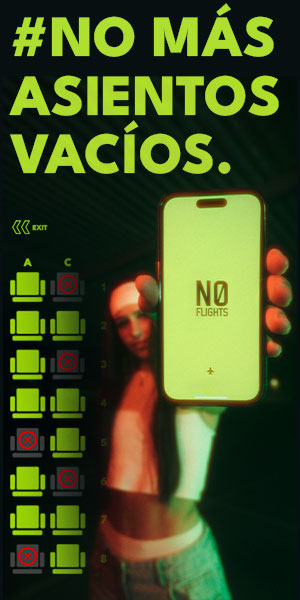FATIGA/Debate escalates over staffing of the lonely, late-night shifts when flights dwindle to a trickle. Fatigued from working his fourth straight night shift, a control tower supervisor nodded off on the job early Wednesday, leaving nobody at Washington's Reagan National Airport to monitor incoming aircraft for nearly half an hour. (CHICAGO TRIBUNE)
As details of the incident emerged Thursday, federal officials suspended the controller, and debate began to heat up over staffing of the lonely, late-night shifts when air traffic thins to a trickle.
Pilots on a United Airlines Airbus A320 jet arriving from Chicago and an American Airlines Boeing 737-800 inbound from Miami tried repeatedly to establish contact with the Reagan tower between 12:04 and 12:28 a.m. Eastern Daylight Time, the National Transportation Safety Board said in a report Thursday.
The airliners eventually were guided to safe landings at the airport by controllers working 40 miles away in the Potomac Terminal Radar Approach Control center in suburban Virginia, after they also tried to rouse the supervisor via telephone.
Federal investigators were examining the effects of fatigue on the controller, a veteran Federal Aviation Administration supervisor with 20 years experience, 17 of them at Reagan. He told NTSB investigators that he had fallen asleep on duty while working his fourth consecutive 10 p.m.-to-6 a.m. shift at the airport.
"I am determined to get to the bottom of this situation for the safety of the traveling public," FAA Administrator Randy Babbitt said in a statement Thursday. "As a former airline pilot, I am personally outraged that this controller did not meet his responsibility to help land these two airplanes."
Neither United Flight 628 nor American Flight 1012 was in any danger during Wednesday's communications breakdown, federal officials said. Still, the incident stirred debate over appropriate staffing levels following a rash of safety incidents that were linked to overworked or distracted controllers.
The NTSB in a safety recommendation Monday urged the FAA to bar controllers from supervisory duties while performing air traffic duties. A Chicago Tribune report in early March detailed an increase in errors at O'Hare International Airport as distracted veteran controllers trained new hires.
The miscue at Reagan National renews attention on airport towers staffed by a single controller, who is susceptible to distractions or drowsiness. Such staffing situations have been linked to at least two fatal accidents in the last 15 years.
Two small aircraft collided over Lake Michigan in 1997, killing five people, after the sole controller in the Meigs Field tower was distracted by an emergency involving a third plane. In 2006, 49 people died when a Comair flight crashed in Lexington, Ky., after the single controller on duty failed to notice that the commuter jet was taking off from the wrong runway.
"One-person shifts are unsafe. Period," said Paul Rinaldi, president of the National Air Traffic Controllers Association, which is urging the FAA to boost hiring of front-line, fully certified air traffic controllers.
In response to the Reagan communications lapse, U.S. Transportation Secretary Ray LaHood asked Babbitt to study staffing levels at control towers around the country and directed the FAA to place a second controller on the job during the early morning hours at Reagan, which lies on the Potomac River close to the heart of downtown Washington.
LaHood's actions drew fire from U.S. Rep. John Mica, R-Fla., chairman of the House Transportation and Infrastructure Committee. He questioned the need to hire an additional controller at Reagan and said he would urge the aviation subcommittee to investigate this and other mishaps.
"Unfortunately, the administration's call for increased staffing at Reagan National, when there are no flights during the early morning hours, is a typical bureaucratic response," Mica said in a prepared statement.
Safety and industry officials said it is rare for a big-city airport such as Reagan to operate with a single controller even during the midshift, spanning 10 p.m. to 6 a.m., when air traffic is light.
Neither of Chicago's major airports is ever manned by a sole controller, said Elizabeth Isham Cory, an FAA spokeswoman.
In O'Hare's tower, three fully trained and certified front-line controllers are assigned to work the midshift, as well as a supervisor, according to the National Air Traffic Controllers Association. Midway Airport keeps two front-line controllers on duty, as do New York's three major airports.
But two other FAA-operated towers in the greater Washington area rely on a single person during overnight hours: Andrews Air Force Base and Richmond, Va., the air traffic group said. Washington Dulles International Airport keeps two controllers on duty during the midshift.
Reagan's controllers handle very little overnight traffic as a result of a noise abatement program. But newer aircraft outfitted with quieter engines are scheduled to land after midnight, including American's flight from Miami, which was slated to arrive at the gate at 12:25 a.m.
That light load likely would have made it tougher for the controller to battle fatigue, said John Goglia, an airline safety consultant and former member of the NTSB.
"The worst thing when you're tired is to have nothing to do," he said.
But the otherwise empty skies over the nation's capital likely made it easier for Potomac TRACON controllers to safely bring the United and American jets in for landing,
"National is probably the best place for that to have happened," Goglia said. "They could know with certainty that there were no other planes around them. It is very restricted air space."





